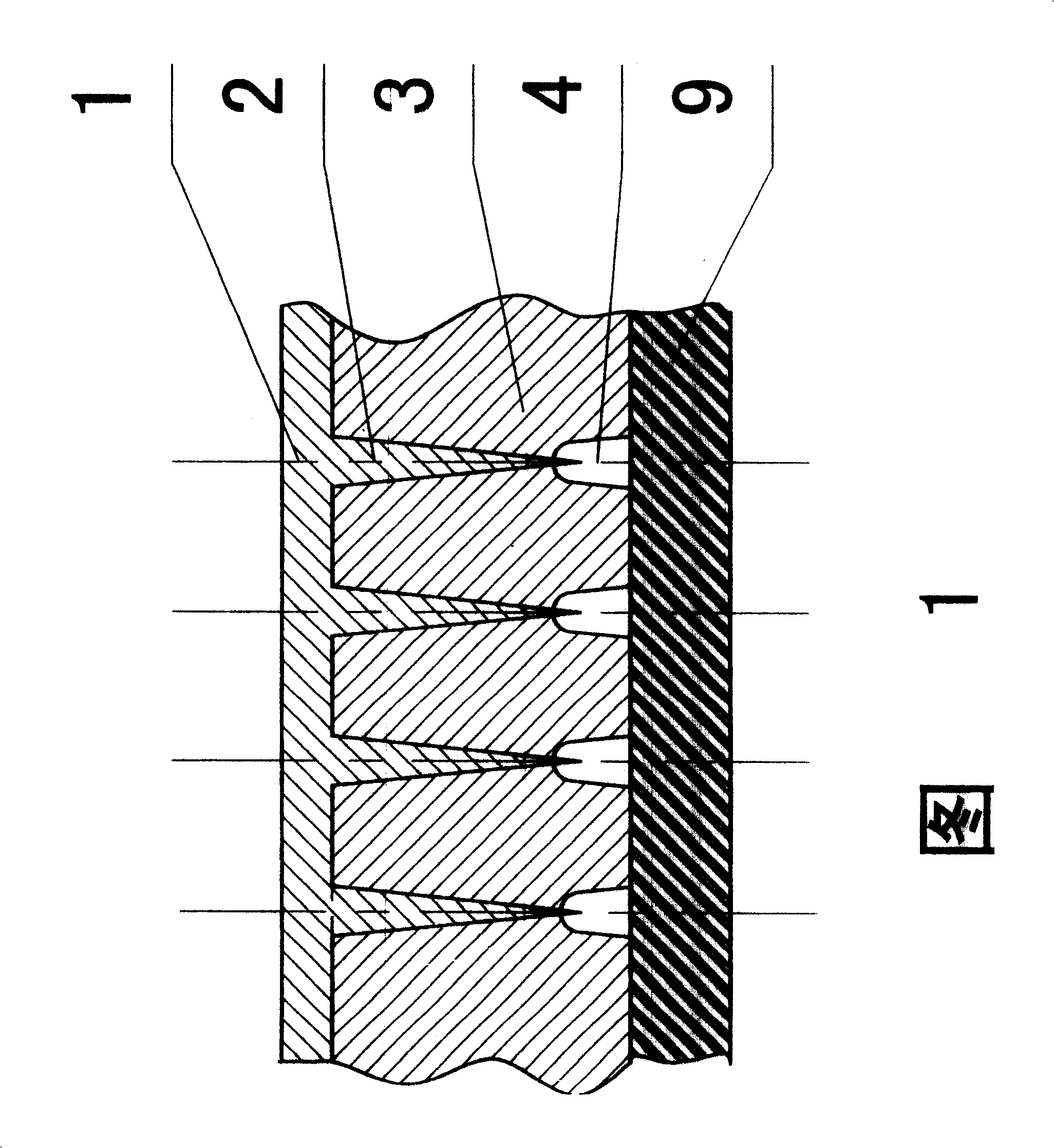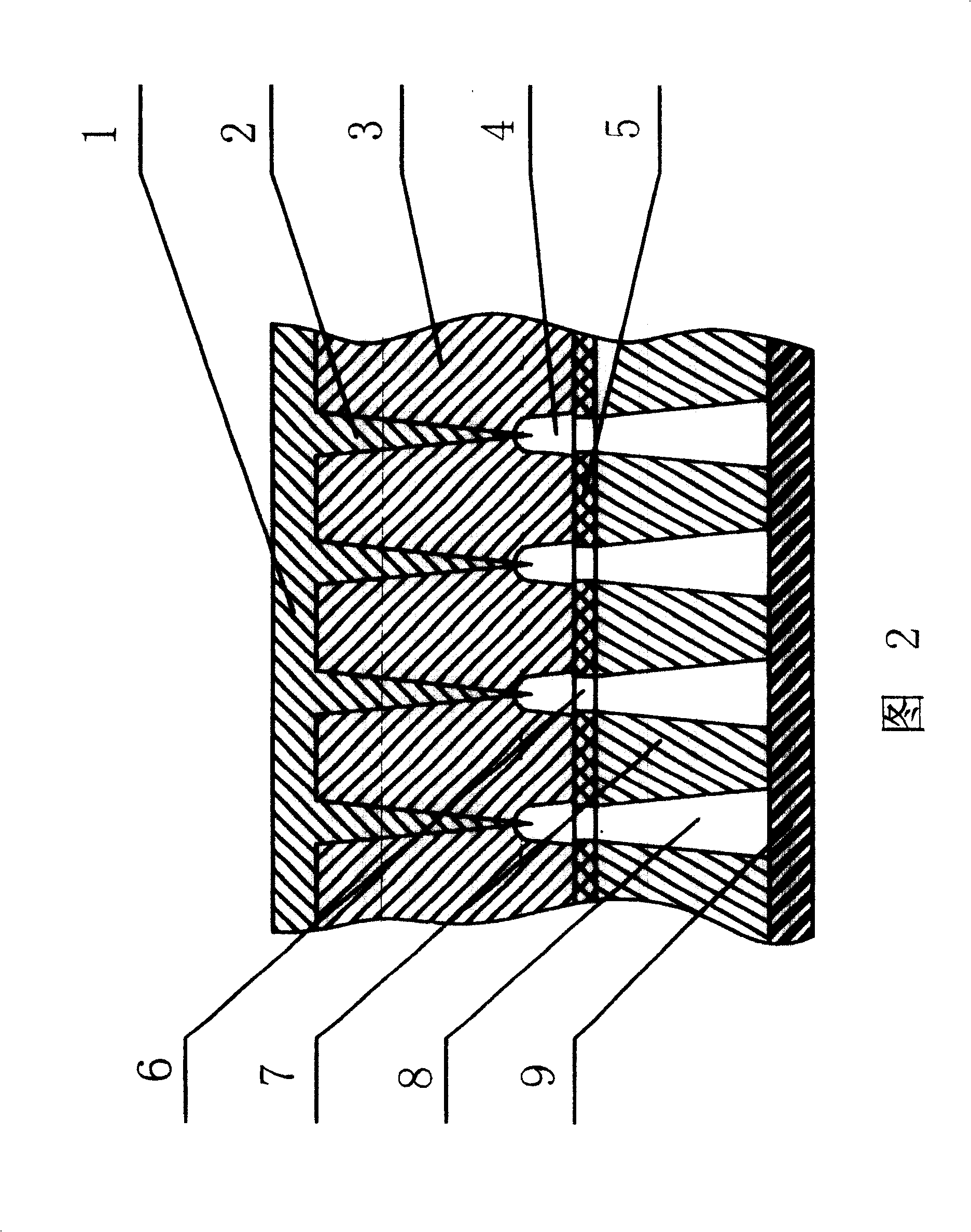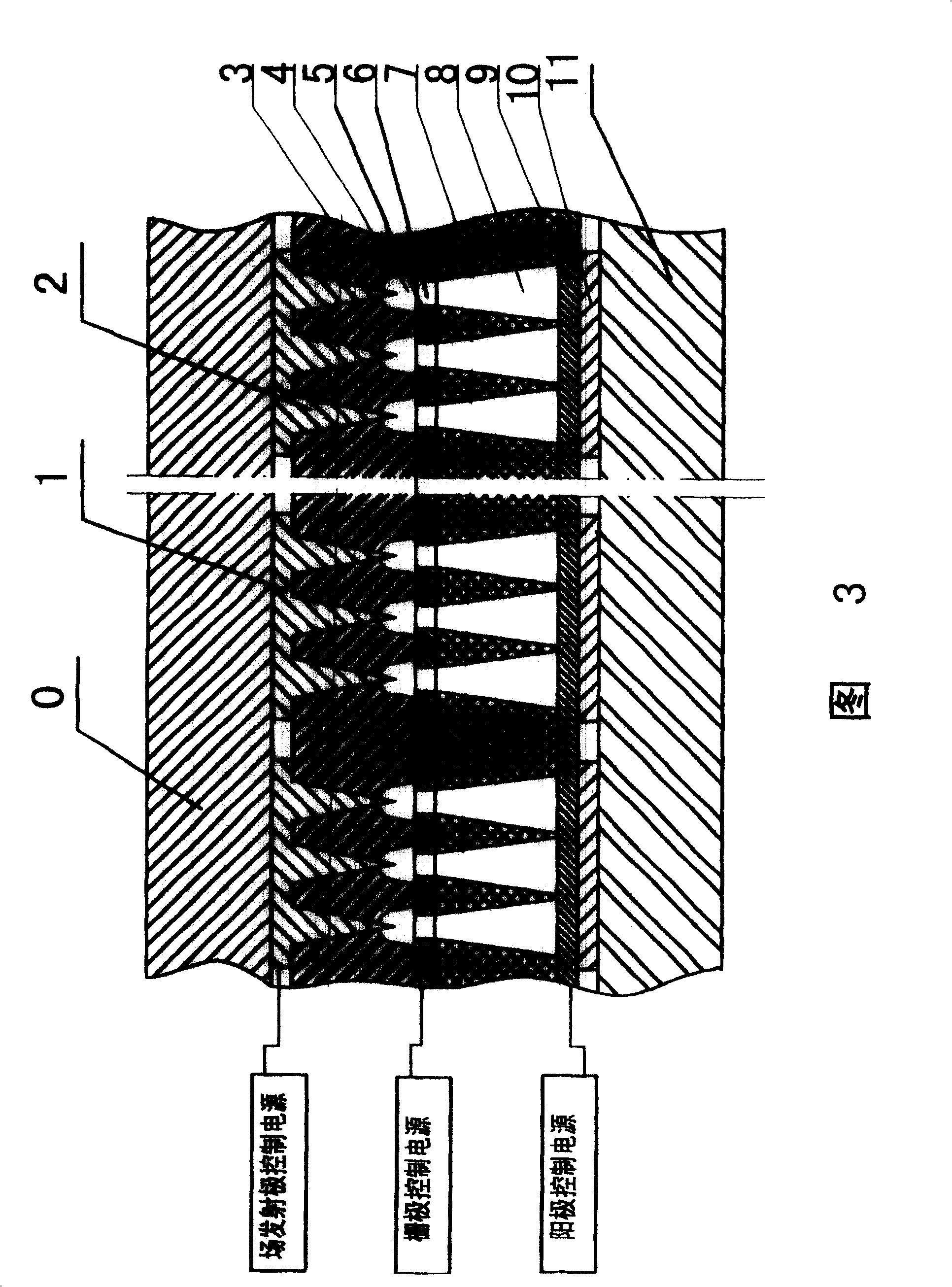Mfg. field emitting vacuum microelectronic element by utilizing nulear track tech and display thereof
A microelectronic device and field emission technology, which is applied in cathode ray lamps/electronic injection lamps, electrical components, image/graphic display tubes, etc., can solve the problems of field emitters without discussion, difficult parameter control, and difficulty in making large sizes, etc. question
- Summary
- Abstract
- Description
- Claims
- Application Information
AI Technical Summary
Problems solved by technology
Method used
Image
Examples
example 1
[0098] ①Take a 50 micron thick mica sheet
[0099] ② Utilize uranium ions with a nuclear energy of 7 MeV to vertically irradiate the above-mentioned mica, and the irradiation density is 1×10 7 / cm 2 .
[0100] ③Etch the two sides of the above-mentioned irradiated mica sheet with 40% hydrofluoric acid for different times, so that the etching depth on one side is about 48 microns, and the etching depth on the other side is about 1-2 microns.
[0101] ④ Platinum plating on one side of the etched hole with a depth of 1 to 2 microns
[0102] ⑤ Use the platinum-plated side as the cathode temporarily, fill the mica hole with copper by electrochemical plating until the 48-micron deep cone hole is filled, and plate until the surface is covered to form a base and connections.
[0103] ⑥Remove the temporary platinum layer as the electrode.
[0104] ⑦Use 40% hydrofluoric acid to further etch the 1-2 micron deep hole until the channel hole expands, the tip of the emitter is no longer b...
example 2
[0106] ① Take a polyester film with a thickness of 4 microns.
[0107] ② Use 20MeV neon ions to irradiate perpendicularly to the above film. Irradiation density 1×10 7 piece / Cm 2 .
[0108] ③ Use 5 mol of sodium hydroxide to perform constant temperature etching on the above-mentioned irradiated polyester film, first measure the track etching rate Vt, and then control the etching time t on both sides of the film 1 =L1 / Vt;t 2 =L2 / Vt. In the formula, L1 is the length of the taper hole on the emitter side, and L2 is the length of the taper hole on the electron channel side.t 1 is t 2 About 3 times of that, the cone hole on the emitter side is about 3 μm deep, and the cone hole on the electron channel side is about 1 μm deep. Or only on the plane where the field emitter is made by t 1 Time etch.
[0109] ④ Plating silver on the field emitter side of the pre-etched thin film by vacuum coating method, so that the deep hole is filled, and a silver layer is formed on the surfac...
example 3
[0112] ①Preparation of polycarbonate-copper-polycarbonate composite material, the thickness of the polycarbonate used as interpolar support A is 4 microns, the thickness of copper is nanoscale, and the thickness of polycarbonate interpolar support B is 8 microns.
[0113] ② Use xenon ions with an energy of 200 Mev to vertically irradiate the above-mentioned composite film with a density of 1×10 8 / cm 2
[0114] ③ Local sensitization treatment is performed on the irradiated composite film by using ultraviolet rays, so that the track etching sensitivity of the substrate A is above 1000.
[0115] ④ Etching the above-mentioned radiation-sensitized composite film with sodium hydroxide solution, the etching time is T=4 / Vt. Make the taper hole on the substrate A reach the copper of the grid, and the diameter of the taper hole is only a few nanometers.
[0116] ⑤ Use the grid as the cathode for the above-mentioned composite film that has been sensitized by radiation and initially e...
PUM
 Login to View More
Login to View More Abstract
Description
Claims
Application Information
 Login to View More
Login to View More - Generate Ideas
- Intellectual Property
- Life Sciences
- Materials
- Tech Scout
- Unparalleled Data Quality
- Higher Quality Content
- 60% Fewer Hallucinations
Browse by: Latest US Patents, China's latest patents, Technical Efficacy Thesaurus, Application Domain, Technology Topic, Popular Technical Reports.
© 2025 PatSnap. All rights reserved.Legal|Privacy policy|Modern Slavery Act Transparency Statement|Sitemap|About US| Contact US: help@patsnap.com



